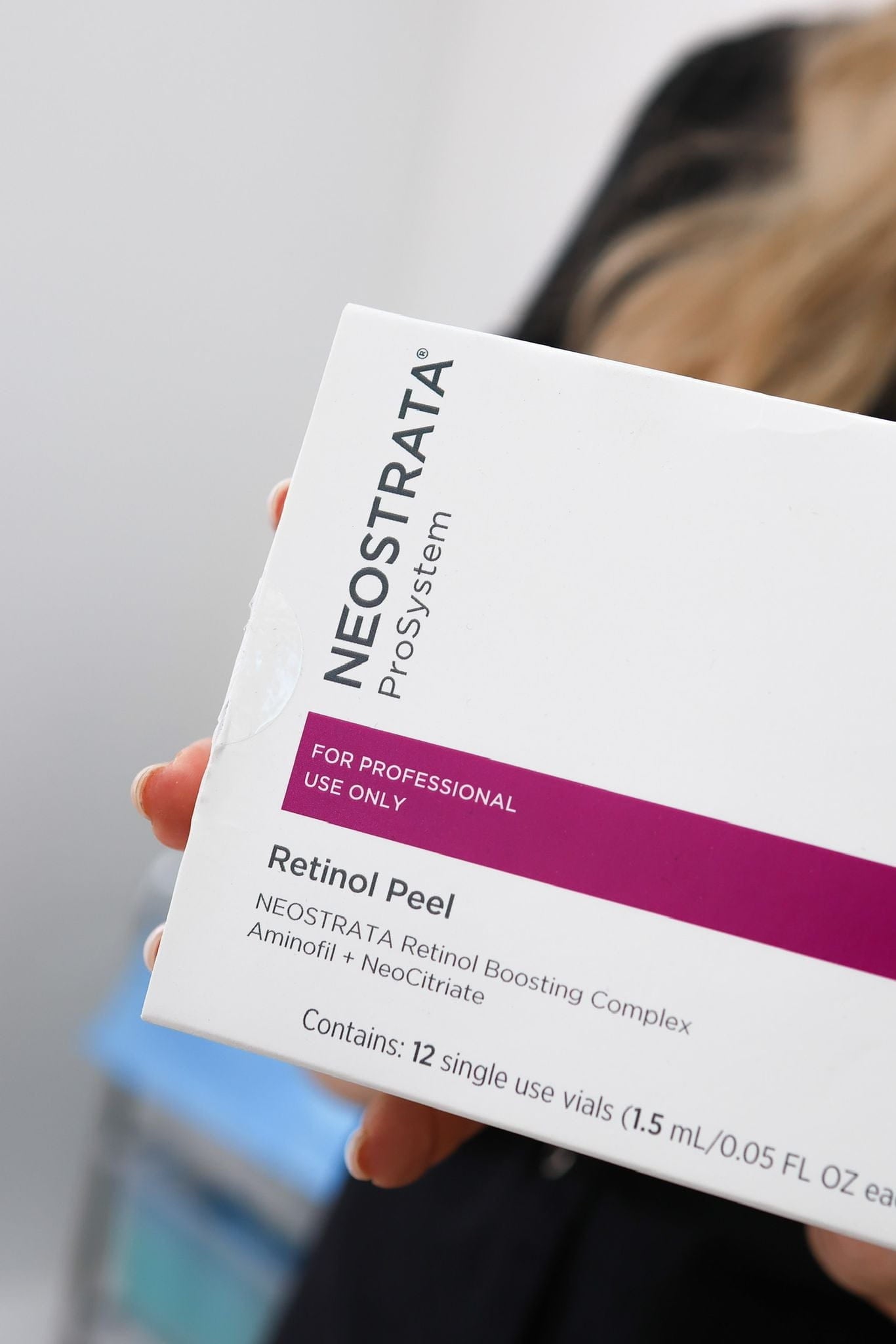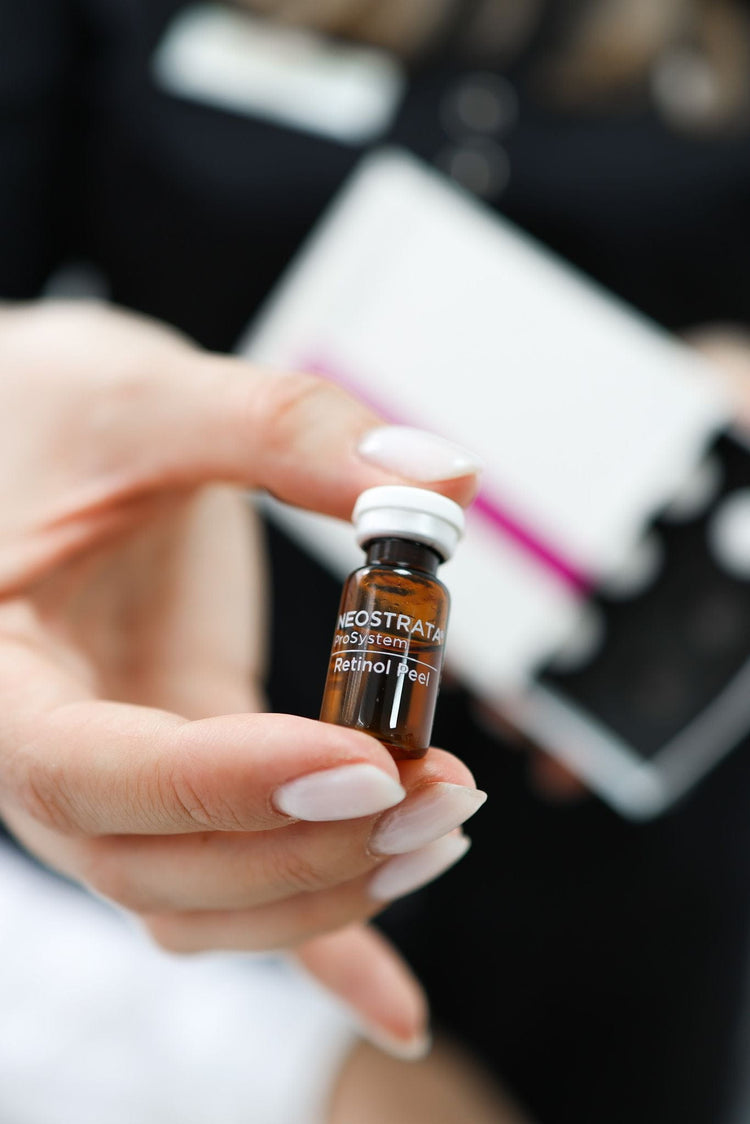Before Your Peel
Embarking on a retinol peel journey can be incredibly transformative for your skin, revealing a brighter and more youthful complexion. However, proper preparation is crucial to maximize the benefits and minimize any potential discomfort. Before you step into a clinic in Kingston Upon Thames, understanding the pre-peel steps is essential for achieving optimal results.
Skincare Routine Adjustments
Prioritizing your skin’s health before undergoing a retinol peel is paramount. Begin by gradually introducing retinol into your routine several weeks before your appointment. Start with a low concentration and increase it slowly as your skin adjusts. This will help acclimate your skin to the active ingredient, reducing the likelihood of irritation or sensitivity during the peel.
It’s also important to be mindful of sun exposure. Retinol can make your skin more susceptible to sun damage, so diligent sun protection is essential. Wear broad-spectrum sunscreen with an SPF of 30 or higher daily, even on cloudy days. Avoiding excessive sun exposure will help prevent post-peel pigmentation issues and ensure your skin heals optimally.
In addition, consider exfoliating gently 1-2 times a week leading up to the peel. This helps remove dead skin cells and allows the retinol to penetrate deeper, enhancing its effectiveness. However, avoid using harsh scrubs or overly aggressive exfoliation methods, as this can irritate your skin and make it more susceptible to damage during the peel process.
Consult with a Skincare Professional
Consulting with a skincare professional before undergoing a retinol peel is crucial for tailoring the treatment to your individual needs and skin type.
A skilled practitioner can assess your skin’s condition, determine the appropriate concentration of retinol for you, and advise on any necessary preparatory steps. They can also identify potential contraindications or concerns specific to your medical history or current skincare regimen.
Their expertise ensures a safe and effective treatment, maximizing the benefits while minimizing any potential risks or adverse reactions.
Patch Test
Before undergoing a retinol peel, it is essential to patch test. This involves applying a small amount of the retinol product on a discreet area of skin, such as behind your ear or on your inner arm.
Wait for 24-48 hours to observe any reactions, such as redness, itching, or irritation. If no adverse effects occur, you can proceed with the peel. However, if you experience any discomfort or sensitivity, it’s best to avoid the retinol peel and consult with a skincare professional.
During Your Peel Treatment
Preparing for a retinol peel is a multi-step process that involves understanding your skin and taking steps to ensure optimal results.
Preparation in the Clinic
Prioritizing your skin’s health before undergoing a retinol peel is paramount. Begin by gradually introducing retinol into your routine several weeks before your appointment. Start with a low concentration and increase it slowly as your skin adjusts. This will help acclimate your skin to the active ingredient, reducing the likelihood of irritation or sensitivity during the peel.
It’s also important to be mindful of sun exposure. Retinol can make your skin more susceptible to sun damage, so diligent sun protection is essential. Wear broad-spectrum sunscreen with an SPF of 30 or higher daily, even on cloudy days. Avoiding excessive sun exposure will help prevent post-peel pigmentation issues and ensure your skin heals optimally.
In addition, consider exfoliating gently 1-2 times a week leading up to the peel. This helps remove dead skin cells and allows the retinol to penetrate deeper, enhancing its effectiveness. However, avoid using harsh scrubs or overly aggressive exfoliation methods, as this can irritate your skin and make it more susceptible to damage during the peel process.

Consulting with a skincare professional before undergoing a retinol peel is crucial for tailoring the treatment to your individual needs and skin type.
A skilled practitioner can assess your skin’s condition, determine the appropriate concentration of retinol for you, and advise on any necessary preparatory steps. They can also identify potential contraindications or concerns specific to your medical history or current skincare regimen.
Their expertise ensures a safe and effective treatment, maximizing the benefits while minimizing any potential risks or adverse reactions.
Before undergoing a retinol peel, it is essential to patch test. This involves applying a small amount of the retinol product on a discreet area of skin, such as behind your ear or on your inner arm.
Wait for 24-48 hours to observe any reactions, such as redness, itching, or irritation. If no adverse effects occur, you can proceed with the peel. However, if you experience any discomfort or sensitivity, it’s best to avoid the retinol peel and consult with a skincare professional.
Preparing for a retinol peel is a multi-step process that involves understanding your skin and taking steps to ensure optimal results.
Application of the Retinol Peel
During your retinol peel treatment, a skilled practitioner will apply a solution containing a specific concentration of retinol directly onto your skin.
The type and concentration of retinol used will be determined by your individual skin type and concerns. This solution is typically left on for a designated amount of time, allowing it to penetrate the skin and exfoliate dead cells.

Depending on the strength of the peel, you may experience varying degrees of tingling or warmth during the application.
Aftercare Instructions
During your retinol peel treatment, a skilled practitioner will apply a solution containing a specific concentration of retinol directly onto your skin. The type and concentration of retinol used will be determined by your individual skin type and concerns. This solution is typically left on for a designated amount of time, allowing it to penetrate the skin and exfoliate dead cells.
Depending on the strength of the peel, you may experience varying degrees of tingling or warmth during the application.

- After the peel, your practitioner will neutralize the solution and apply soothing agents to calm the skin.
- You will likely be given a special post-peel cleanser and moisturizer to use for the following few weeks. These products are designed to support healing and protect your new, smoother skin.
- It’s essential to avoid sun exposure as much as possible during the recovery period. Your skin will be more sensitive to the sun’s rays, so wear a broad-spectrum sunscreen with an SPF of 30 or higher at all times.
- Avoid exfoliating, using harsh products, or picking at any flaking skin. This can irritate your skin and delay healing.
After Your Peel
Embarking on a retinol peel journey can be incredibly transformative for your skin, revealing a brighter and more youthful complexion. However, proper preparation is crucial to maximize the benefits and minimize any potential discomfort. Before you step into a clinic in Kingston Upon Thames, understanding the pre-peel steps is essential for achieving optimal results.
Initial Recovery Period
After your retinol peel treatment, you’ll need some time to allow your skin to recover and adjust. This initial recovery period typically lasts about 5 to 7 days.
During this time, your skin may feel dry, tight, or slightly irritated. You might also experience some redness, flaking, or peeling as the old skin cells shed away.
It’s essential to follow your esthetician’s post-peel instructions carefully during this period.
Maintaining Results
Maintaining the results of a retinol peel involves a dedicated skincare routine and lifestyle choices. First, continue using the post-peel cleanser and moisturizer provided by your practitioner. These products are specifically formulated to support healing and protect your newly resurfaced skin.
Sun protection remains crucial even after the peeling process has completed. Retinol can make your skin more susceptible to sun damage for several weeks, so wear a broad-spectrum sunscreen with an SPF of 30 or higher daily, rain or shine.
Avoid exfoliating or using harsh scrubs on your skin as this can disrupt the healing process and potentially cause irritation. Allow your skin to naturally exfoliate during the recovery period and resume gentle exfoliation only after it has fully healed.
Consider incorporating antioxidants like Vitamin C into your skincare routine. These can help protect against environmental damage and further enhance your skin’s glow.
Remember that consistency is key. Adhering to a consistent skincare regimen, including sun protection, will help you maintain the long-term benefits of your retinol peel, revealing smoother, brighter, and more youthful skin.
- The Top 5 CBD Infused Gummies For A Calm Mind - December 4, 2025
- The Pros And Cons Of Consuming THC Drinks - December 1, 2025
- The Best CBD Gummies For Stress-Free Living And Calmness - November 28, 2025
